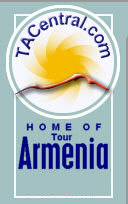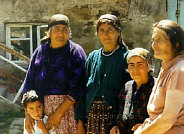Of the formerly fairly large sub-ethnic groups of Armenians – the Armenian Gypsies and the Armenian Tats, very few of their representatives still remain in Armenia. The reason for this is that the predominant area of residents for both of those groups have been other territories of Historic Armenia, rather than Eastern Armenia that includes the Republic of Armenia as it is today.
The Armenian Gypsies, having a special ethnonym BOSHA are Christians of the Armenian Grigorian Confession, followers of the Armenian Apostolic Church. They are descendants of Gypsies who came to Armenia perhaps in the 11th – 13th centuries as part of a large Gypsy migration from East India, their historic homeland.
History
Throughout history, the Gypsies have been referred to by many names—in Byzantine poetry, for example, they were referred to as Egyptian, but their precise origins are lost in antiquity. However, since the 18th century, scholars have been certain they came originally from India. The study of language can provide many clues about the development of a people, and that of the Roma is no exception. An important philological study was done in the 18th century establishing the fact that one in every three words in the Romani language is Hindi, which supports the theory that they originated in India.
At some point in the distant past, possibly as early as the 5th century c.e., more likely, sometime in the 10th century, they left India and went to Persia, borrowing numerous Persian words. They then passed through Armenia, incorporating equally numerous Armenian words in their own language. Next, they moved to the Byzantine territories of Constantinople and Thrace, and then, even before the Ottoman Turks, they passed into the Balkans. Finally, they moved into Europe, during successive waves, in the 15th century, the 19th century, and the post-communist era.
The armenization of the Gypsies who had settled in Armenia must have occurred perhaps in the 14th to 16th cc., anyway by the early 19th they did already have an Armenian identity, though had retained their language (an Indo-Aryan dialect), a particular lifestyle and a feeling of belonging in a group. Incidentally, some Gypsy (Bosha) families gave forth a number of prominent figures of the Armenian culture in the 19th century.
The Armenian-Gypsy system of first and second names as well as all personal attributes have Armenian characteristics. Considering the Armenian self-awareness and originality at the same time, the Armenian Gypsies are to be related to the groups having the so-called complex identity.
The language of the Armenian Gypsies, having occupied a special place in the system of Gypsy dialects, had been still in use in the late 19th century, but rather as a clandestine slang. It is now spoken by very old individuals and is quite degenerated.
The Armenian Gypsies now live in Yerevan, Gyumri, and in Georgian cities Akhalkalak and Akhaltsikh. Their principal economic activity is smithcraft, basket weaving, producing the household effects, which is quite common among the sedentary Gypsies. In contrast to other Gypsies, the Bosha do not practice fortune telling or magic.
To determine the numbers of the Armenian Gypsies is impossible, however by approximation they can amount to a few thousand persons in Armenia and Georgia. As to the Armenian Tats, they, like the Bosha, possess all the Armenian features: the names, confession, identity, etc. At the same time the Tats retain their language and the sense of their selfawareness, although at an everyday-life level. At the social level, however, the facets and features are being obliterated.
The Armenian Tats speak a particular language, a North-West Iranian dialect; they designate it as FARSI, i.e. PERSIAN. Now this language is unfortunately spoken only by individuals over 50.
The Tats live in Armenia currently in a tightly populated community in the village of Nor Madrasa (New Madrasa) near Ashtarak city. The village was established by the migrants from Azerbaijan where the Karabakh conflict triggered a massacre of the Armenian Tats, so that they had to flee to Russia and Armenia. Living now in Nor Madrasa are about a hundred families of the Armenian Tats.
Resources
Scholars who have written about the Armenian Boshas during the last century include Dr. Franz Nikolaus Finck, (1867-1910), Professor of General Linguistics at the University of Berlin. He lived in Armenia with the Gypsies and wrote in German, Armenian and English. Another is V. Papaziants (Papazian) who wrote "Hay-Poshaner, An Ethnographic Study", Tiflis, 1899 (in Armenian.)
Contemporary scholars include Charles J.F. Dowsett (1924-1998) of Oxford University whose last work was "Sayat-Nova: A Biography and Literary Study", 1997. Professor Dowsett's "Some Gypsy-Armenian Correspondences" (in Revue des etudes Armeniennes, nouvelle serie, v. 10, 1973-74) explores further, in English, the "Gypsy-Armenian" language. Currently, Dr. John A. C. Greppin, Professor of Linguistics at Cleveland State University who has lived and researched in Armenia continues the linguistic and ethnographic study of our Armenian Boshas in his many publications.




